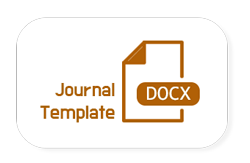Influence of Guidance and Counselling Programmes on Secondary Students School Connectedness. A Case Study of Nyamira County, Kenya
DOI:
https://doi.org/10.53935/2641-533x.v2i3.117Keywords:
Guidance, Counselling, Public secondary schools, Students school connectedness, Nyamira County.Abstract
Secondary school students are still within the age bracket of rapid physical, social and psychological changes. These changes pose a number of challenges which result to cases of maladaptive behaviour as evidenced by strikes, riots, boycotts, indulgence in premarital sexual activities, truancy, drug and substance abuse, disinterest in school and poor academic performance. Diverse behaviour modification strategies have been employed to mitigate against these negative tendencies but these maladaptive behaviours are still rampant among secondary school students. The current study sought to investigate the influence of guidance and counselling programmes in improving secondary students school connectedness in Nyamira Count,y Kenya. The study objective was to investigate the influence of guidance and counselling programmes on secondary students school connectedness. The study was guided by two theories namely: Ludwig Bertalanffy’s Systems Theory and Erik Erickson’s psychosocial development Theory. The study utilized descriptive survey design as well as ex-post facto design. The sample size of the study were 52 head teachers, 52 deputy head teachers, 52 guidance and counselling teachers and 311 students drawn from a population of 7740 form three students, 174 head teachers, 174 deputy head teachers and 174 guidance and counselling teachers. Purposive sampling procedure was used to select public secondary schools, head teachers, deputy head teachers, guidance and counselling teachers and form three students. Stratified sampling procedure was used to group the target population into four strata based on school type and gender. Proportionate sampling procedure was used to select equal representation of respondents from each stratum of public secondary school. Random sampling procedure was used to obtain the final sample from each of the stratum. Questionnaires and interview schedules were used to collect data. Prior to data collection, a pilot study was conducted to ensure validity and reliability of the research instruments and using Cronbach reliability test, reliability coefficient of ? = 0.727 was reported. Descriptive and inferential statistics was used to analyze the data. The data analysis was done with the aid of computer software- statistical package for social sciences (SPSS) version 22.0. The study found that there is a strong positive relationship (r = .622) between guidance and counselling programme and students school connectedness which was statistically significant (?<.005). The study recommends that all teachers in the school need to understand in depth the concept of guidance and counselling in the school setting and how it can be used to improve students school connectedness. The education ministry should organize regular seminars based on personal, social and moral practices for the schools. This will ensure that the policy on professional ethics is adhered to for improved performance. The government through the Ministry of Education and Teachers Service Commission should employ more teacher counselors in secondary schools to effectively tackle social and academic challenges facing the students.











